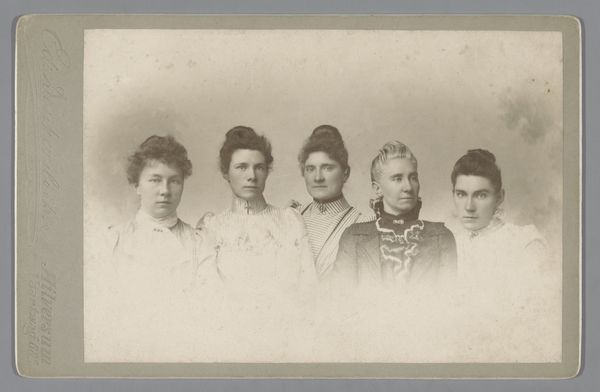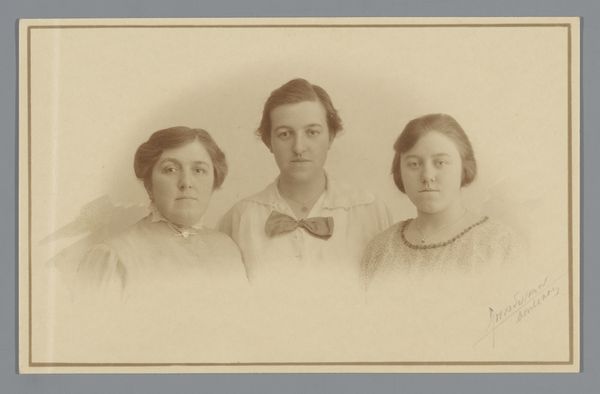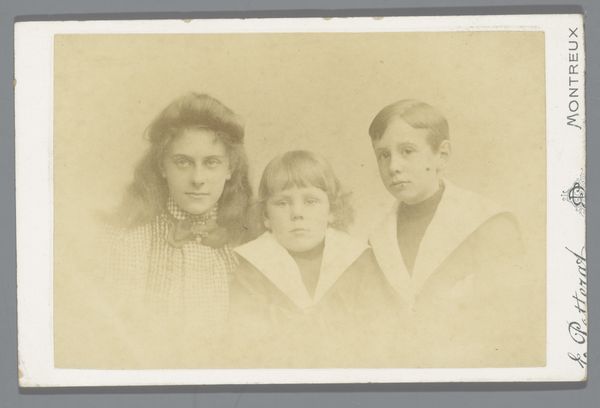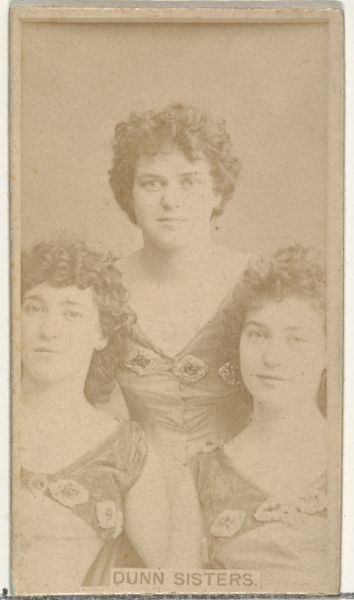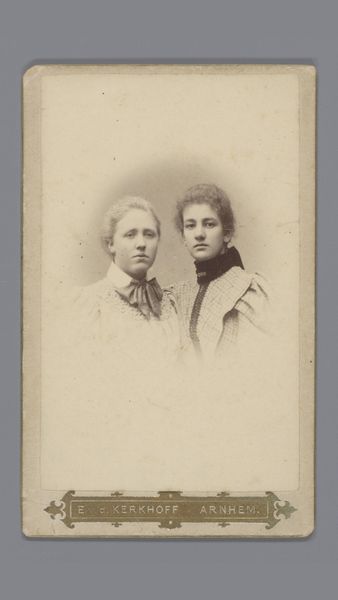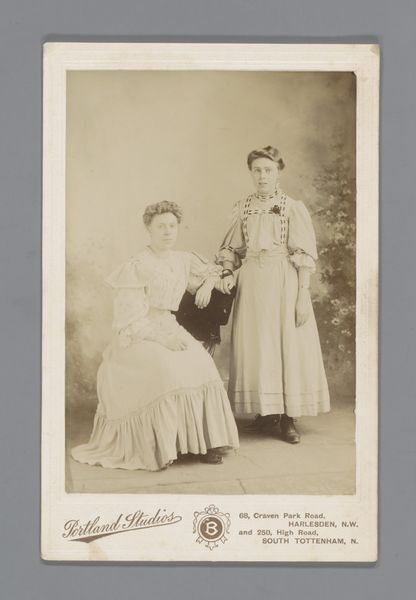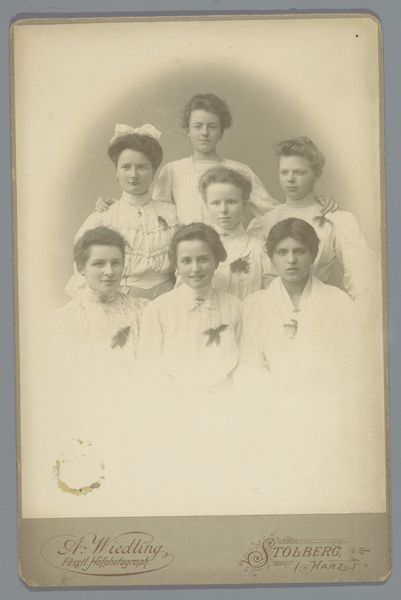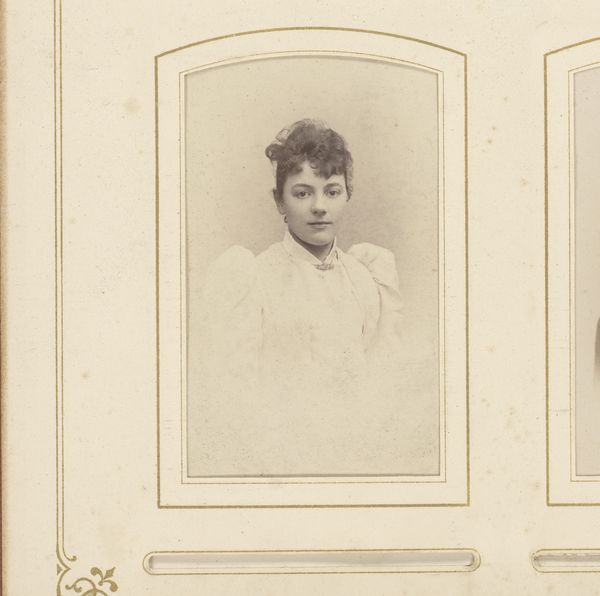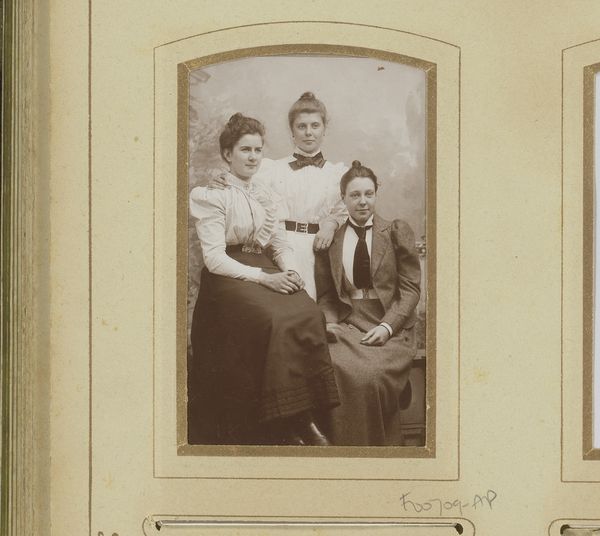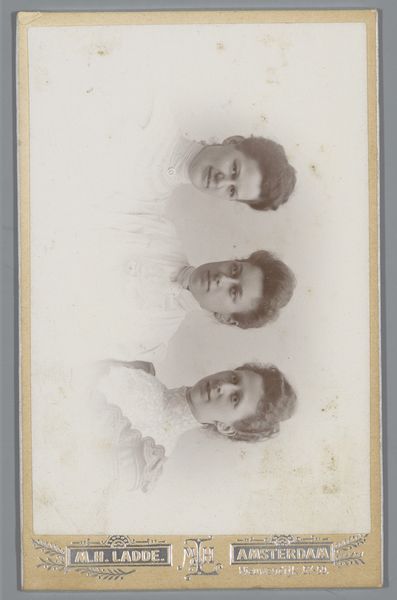
photography, gelatin-silver-print
#
portrait
#
photography
#
group-portraits
#
gelatin-silver-print
#
realism
Dimensions: height 105 mm, width 64 mm
Copyright: Rijks Museum: Open Domain
Editor: Here we have a gelatin-silver print from 1898, "Portrait of three women" by Lodewijk van de Winkel. The composition is very formal and striking. They all have quite serious expressions. How do you interpret this work, particularly in its historical context? Curator: What strikes me is how this seemingly straightforward portrait speaks to the constrained roles of women at the turn of the century. The women's positioning and their restrained presentation within the strict conventions of the portrait format are significant. Consider the performative aspect of photography then - what choices do we imagine these women had in the way they wanted to be seen? Editor: That's interesting. I hadn’t considered how their clothing and expressions are almost like a uniform, limiting individual expression. Do you think there’s a message about female solidarity in this image too? Curator: Absolutely. Group portraits, particularly of women, often represented a form of communal identity. Were they members of a social organization, a reform group, or simply friends supporting each other in a patriarchal society? How could this photograph be a statement of shared values or mutual aid, especially if the women were involved in social reform? Editor: It's compelling to consider what's *not* being shown, the lives and the labor that are veiled behind this stiff formality. This opens a window into their world beyond the surface. Curator: Precisely! By examining the social and political landscape, we see the agency, resistance, and quiet defiance possibly embedded in what seems like a conventional photograph. Editor: This perspective has really reshaped my view of this portrait. I'm leaving with so much to consider. Curator: Me too. Thinking about historical portraits critically offers such insights into the lives and contexts of people often overlooked.
Comments
No comments
Be the first to comment and join the conversation on the ultimate creative platform.
